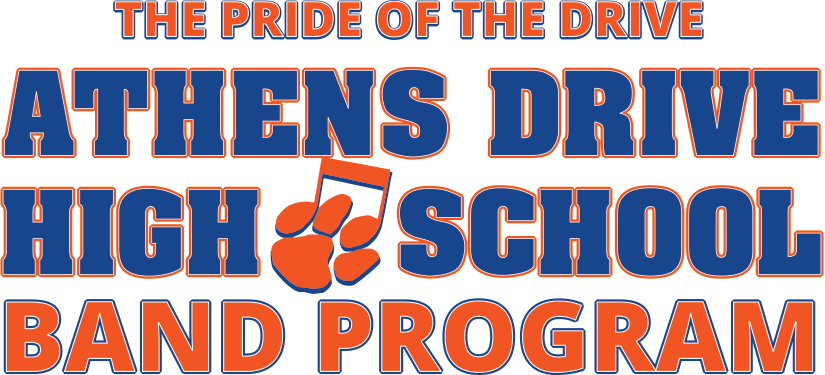“DOC TALK”/CLASS LESSON – Wednesday, April 22, 2020
Video Link: https://youtu.be/jfA_LGD4HPE
ANNOUNCEMENTS
REVIEW OF THIS WEEK’S LESSONS
Monday: Musical Humor—Richard Strauss’ “Till Eulenspiegel’s Merry Pranks”
Tuesday: Active Listening vs. Passive Listening—Chopin’s Ballade #1 in g minor, op. 23”
Today’s Lesson: Finding your “break-through” moment; Beethoven’s Eroica Symphony No. 3
It is highly likely that ALL OF YOU will have at least 1 “break-through” moment in your life. I am fortunate to have had many (and maybe I’ll enjoy a few more):
-I discovered my LOVE of MUSIC while a junior when I was taking a music appreciation course and listened to MOZART for the first time!
-I was elected “band captain” my senior year of high school; a moment that rocketed me out of my shyness and forced me to open up my personality—and now look at me…all LIT!
-In 1997, our marching band swept its class winning 1st place in all categories and the wind ensemble earned straight “superior” ratings. From then on, we’ve been soaring higher and higher!
That said, it is not a stretch to realize that COMPOSERS and other musical artists have “break-through” pieces that put them on the “musical map.”
Ludwig Van Beethoven’s (1770-1827) break-through piece was his Eroica Symphony, No. 3. Surprisingly, it was not his famous Symphony No. 5 with the famous 4-note motif. Even late in his life, Beethoven’s FAVORITE work was his Symphony No. 3!
Up to the time that the Eroica Symphony was written (1803), Beethoven made a fine name for himself in Vienna (the “musical capital” of Europe at the time) as a virtuosic pianist and a very decent composer. However, it was the Eroica which caused a huge “fuss” and really put his name on the front page!
Why?
1) The Eroica is TWICE AS LONG as any preceding symphony by any composer—including Mozart and Haydn. It is almost 50 minutes long! Many people in the audience complained that this was simply too long for a piece of music to last! [Imagine what they would think of a Mahler symphony which lasts 1.5 hours!]
2) The amount of dissonance (clashing sounds) and tension is way more than other works…it is the first time that Beethoven really flexed his “muscle” and showed the PASSION that can be made with the sound of an orchestra. This caused many critics to shun the work as barbaric and chaotic. One even called it a “dangerously immoral composition!” We would laugh at such invectives today because you will find most of the symphony quite delightful to listen to!
3) Each movement of the symphony has a similar type theme—one built on a major triad/arpeggio: 1-3-5. In other words, the 4 movements of this symphony are very “related.”
4) There is actually a bit of a “program” to this “heroic” symphony in a very general sense: Beethoven originally dedicated the piece to Napoleon because Beethoven admired that Napoleon seemed to be the champion of the “common man.” That is until Napoleon crowned himself emperor—which infuriated Beethoven and he literally scratched Napoleon’s name off the title page (there are actual HOLES on the manuscript paper)!!! Beethoven then suggested that the symphony is about a fictional “hero” who first appears in the first movement, whose funeral is depicted in the second movement; whose voice is heard by the horns in the “trio” of the third movement; and lasting message of triumph is sounded in the fourth movement.
5) Other novel (new “break-through”) aspects of this work include the very long coda in the first movement—it is actually a 2nd development lasting over 100 measures! (Beethoven just wasn’t done manipulating his ideas!)
A FEW OTHER INTERESTING POINTS…
Beethoven’s comments about the Eroica Symphony: “I am not satisfied with my works up to the present time. From to-day I mean to take a new road!”
Beethoven rarely assigned a “title” to his works, most are simply “Symphony No. 1” or “Piano Concerto No. 5.” To title the work “Eroica,” the piece must have had special significance.
Shortly before this symphony was written, Beethoven discovered that he was going deaf. He made the decision to TRIUMPH over this malady rather than waste away. Is it possible that the “hero” noted in this symphony is Beethoven himself???
ASSIGNMENTS
Listen to the complete Eroica Symphony. The attached link begins with some commentary—making the performance almost seem like an athletic event!
Listen to a few of Beethoven’s other symphonies, namely his Symphony No. 5 in c minor, Symphony No. 6 in F Major (“Pastoral” Symphony—this one definitely has a program); and his Symphony No. 9 in d minor (which introduces singers and a chorus in the fourth movement (“Ode to Joy”).
Enjoy!
“Doc”

